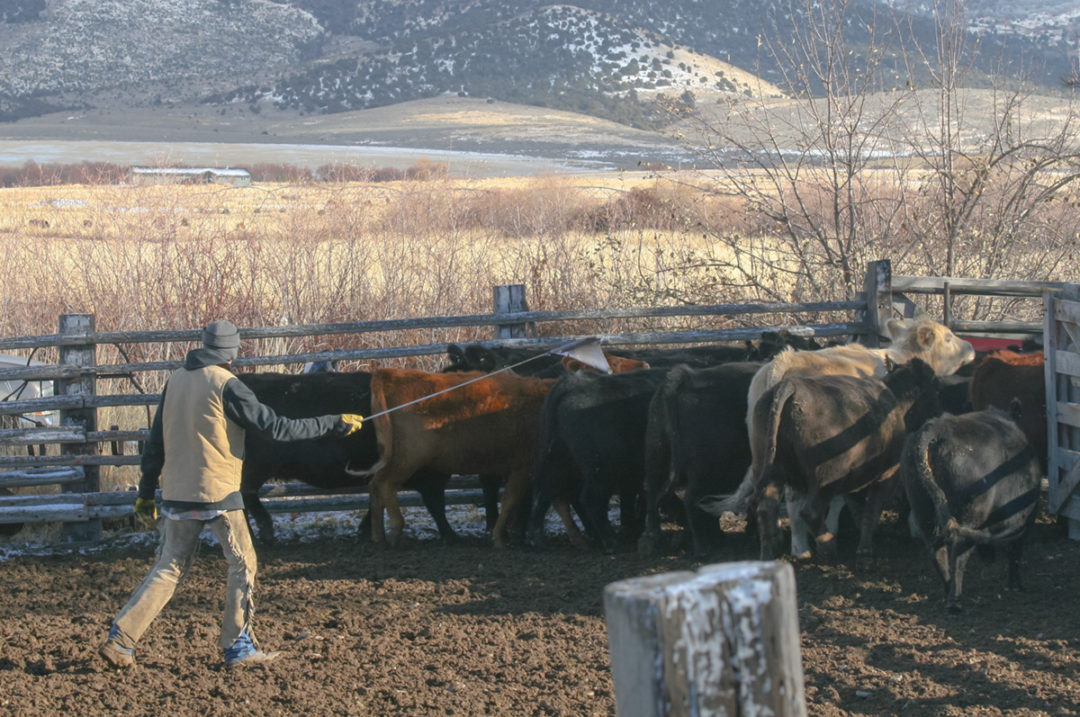It’s surprising how quickly winter can creep up on cattle producers each year. Many times, it appears in force, while cattle-handling equipment, pens, alleys and related infrastructure remain either in a state of disrepair or only partially complete.
Upgrades and essentials to focus on
As winter approaches, a list of essential tasks to complete could fill a never-ending spreadsheet, but a few objectives stand out to keep both handlers and animals safe and productive.
Benton Glaze, a professor and extension beef cattle specialist with the University of Idaho, says one of the first things beef producers should do before the ground freezes and cattle are brought home is to check the site’s smaller paddocks and pastures for injury-causing foreign objects.
Next, if windbreaks are lacking or missing altogether, it’s critical they’re addressed before it’s too late. Improving working conditions for both handler and animal comfort will ease stress levels all around.
“Think of the prevailing wind directions influencing the ranch,” Glaze says. “If permanent windbreaks aren’t possible, place some bales or other large equipment to block the wind around handling facilities, chutes and alleys. Anything we can do to make it more comfortable, especially for sick animals, will make working them easier and offer a better opportunity for them to get healthy.”
Glaze recommends looking at gates and high-traffic areas around bunks and feeders to ensure they’re built up and well-packed with either concrete or small gravel to provide good footing. Sagging gates should be reinforced and strengthened for smooth winter operation and mud and manure hauled away to reduce lameness and footing issues.
“Water resources are also vital heading into the winter,” Glaze says. “Not only do waterers and troughs need to be in well-packed areas and free of ice, but water also needs to be available in enough quantity to maintain good health. If we have any doubts about this, address them before the frost sets in.”
Water leaks should be repaired before they become ice slicks that cause slipping and injuries. Electrical connections and wires should also be checked and repaired against shorts, weak spots and breaks.
Additionally, Glaze emphasizes that placing feed in front of animals during winter is non-negotiable. The equipment and vehicles tasked with these jobs should be repaired, maintained or replaced if necessary, as it’s never acceptable to leave cattle unfed or in a deficit situation.
Portable multifaceted corral systems
For those unable to complete corral and facility repairs or construction before winter arrives in full force, a portable, foldable corral may be the answer, at least in the short term.
In 2002, John McDonald invented the Rawhide Portable Corral, the first-ever, electric-over-hydraulic corral layout on wheels to place and unfold into a 200-head working corral. Rawhide’s current models hold and handle between 150 and 400 yearlings.
“The top reason our customers buy is they don’t have to invest as much in a permanent facility,” says Cassy Wilson, Rawhide’s marketing manager. “With this option, they move it to where they need it, set the main frame on the ground, unfold the panels into a corral and it’s ready to use.”
Wilson explains that portable systems aren’t permanent units but can be set up for weeks and even months. They could be added into a partially built corral or used completely on their own. Many farmers partner with nearby neighbors in the investment costs, sharing the units.
Portable corrals feature temporary or permanent alleyways, which are hydraulically narrowed to accommodate a headgate or act as a squeeze chute. Panels are unfolded to create multiple variations of pens for sorting purposes or processing through a headgate.
Wilson says units are easily transported at road speed by trailer ball or gooseneck hitch. The main frame is placed on reasonably level ground using hydraulics and the unit is unhooked from the truck. All panels and gates have collar-and-pin assemblies to allow flex while connections are made.
“A husband and wife team can operate it without hiring extra labor or panicking about getting posts in the ground before it freezes,” Wilson says. “It’s quick and easy. Park it, set it down, unfold everything and secure the connections. Then, drive through the main frame, luring in the cattle. Catch them, do what’s needed, fold it back up and move on.”
Unique equipment to ease workloads
“These days, modular equipment is heavy enough to work large numbers of cattle while placed on top of the ground,” says Steve Deges, livestock equipment design and operations manager for MJE Livestock Equipment based in Montezuma, Kansas. “They’re especially helpful for temporary conditions when the ground is too frozen for putting in posts. Tubs and alleys, loadouts and holding pens are easily secured.”
Deges recommends using a portable, three-way sorting trailer for operations with limited workers. These units are set in front of a squeeze chute and use either a 12-volt system or the chute’s own hydraulics to open and close multidirectional gates.
“If alone, or with limited help, it’s a lot easier to sort right out of the chute than it is to process them all and then go and try to sort later from a larger pen,” Deges says.
Portable loading chutes are also useful when permanent ramps aren’t available. Some models come equipped with a grip-strut floor, allowing for ice and manure to be walked through while consistent traction is maintained.
Additionally, combination cattle gates with either walk-through or ride-through latching sections are beneficial and are easy to install or add to existing panels and continuous fence.
While not ideal, temporary and portable handling facilities, along with well-thought-out infrastructure upgrades and repairs, can help producers ride out winter conditions while maintaining comfort and productivity.
“Winter can be harsh, but when we get right down to it, time of year doesn’t really matter,” Glaze says. “We must ensure we’re able to feed animals properly, provide them with adequate water, plus have the facility and equipment available to move them when needed or control any emergencies.”








